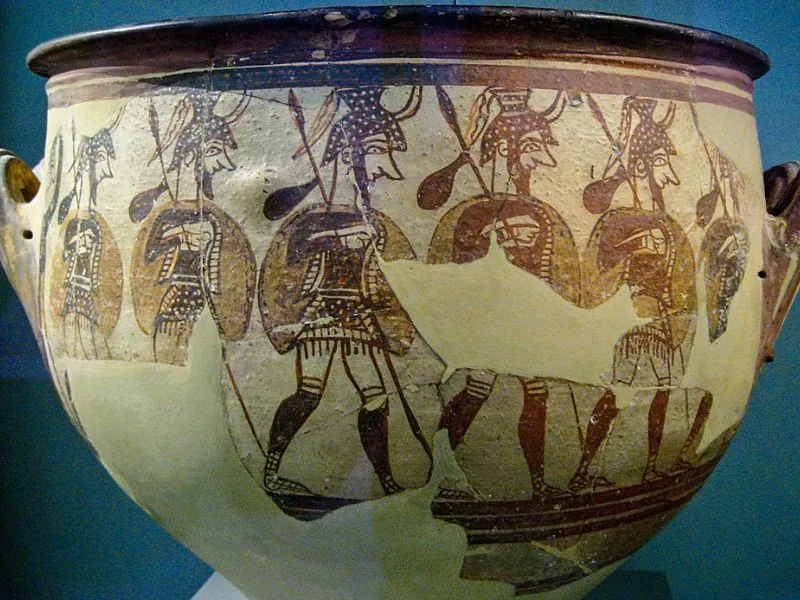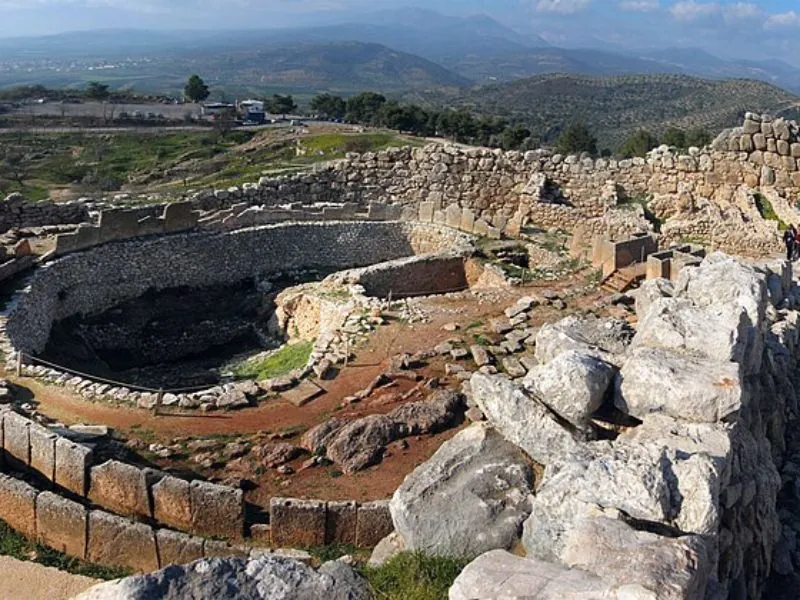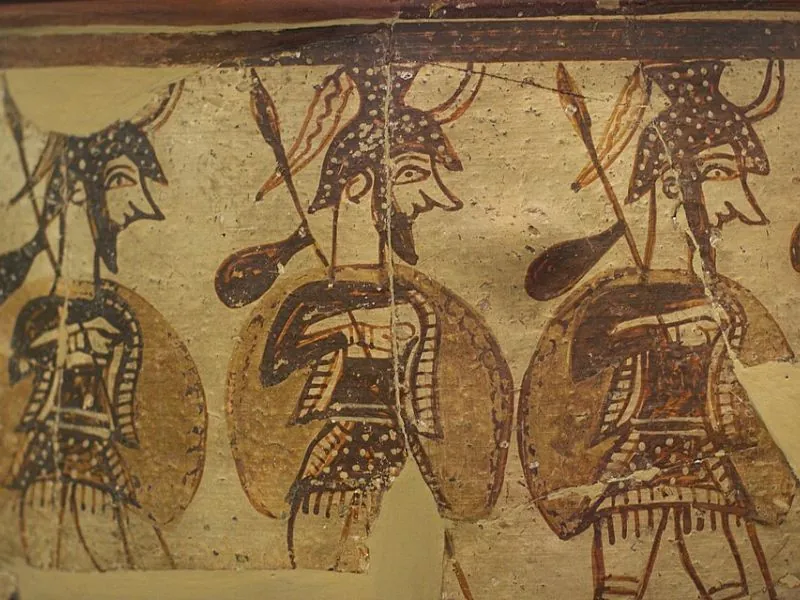
In the shadow of Cyclopean walls and royal tombs, Mycenaean warfare emerged as the defining force of Bronze-Age power. Far from being a last resort, warfare in Mycenae was central to politics, prestige, and elite identity. It shaped the architecture of citadels, the inventory of palaces, and even the spiritual lives of the people. Whether carved into dagger blades or immortalized in Linear B tablets, the warrior stood at the very heart of Mycenaean civilization.

At the core of Mycenaean warfare was an arsenal forged in bronze. Early warriors wielded slender thrusting rapiers, while later generations preferred leaf-shaped swords designed for versatile use in battle. Spears and javelins—ideal for close and ranged combat—were paired with figure-eight and tower shields, often made from layered animal hides.
Helmets, including the iconic boar tusk design, added both function and flair, worn as much for defense as for status. Dagger blades etched with hunting scenes and mythic beasts—some from Grave Circle A—reflect not just martial readiness but aristocratic identity. These weapons were heirlooms, symbols of lineage and command, used in battle and buried in graves as eternal markers of rank.
No study of Mycenaean warfare is complete without the chariot. Linear B tablets from Pylos and Knossos mention chariots extensively—documenting everything from assignments to repairs. These swift, two-wheeled vehicles offered elite warriors mobility and shock value.
Pulled by horses and manned by archers or javelin throwers, chariots could break enemy lines or retreat with dramatic speed. Maintaining them required a full logistical team: wheelwrights, grooms, scribes, and armorers. The prominence of chariots in both records and iconography shows their integral place in battlefield strategy and elite culture.

The fortresses of Mycenae, Tiryns, and Gla reflect a culture that understood war was inevitable. Massive Cyclopean walls weren’t just for show—they were architectural responses to siege. Narrow gates like the Postern Gate and bastions for archers channeled and repelled attackers.
The presence of hidden underground cisterns, especially at Mycenae, ensured access to water even during long sieges. Though direct evidence of siege engines is rare, the layout of citadels speaks volumes. Mycenaean warfare prepared for attack, but perhaps more impressively, it planned for endurance.
Beyond the walls, Mycenaean warfare extended into the Aegean. Stirrup jars and Naue II swords found in Crete, Cyprus, and the Levant suggest both military and mercantile dominance by sea. Linear B tablets reference coastal garrisons and ship provisioning, and ports like Nauplion and Midea likely played critical roles in projecting naval influence.
Though their ships remain lost to time, the geographic footprint of Mycenaean finds indicates a sea power capable of asserting itself across fragile island chains and hostile foreign coasts.

Warfare wasn’t merely functional—it was sacred. Elite warriors were interred with swords and armor, their tombs sanctified with martial relics. Shrines contain miniature weapons, votive offerings from living fighters or grieving families. Frescoes at Pylos and other sites depict processions of armed men, emphasizing martial glory as a civic ideal.
Even the scribes joined the war effort. Linear B inscriptions list armor stockpiles, ration distributions, and craftsmen quotas—an administrative machine tailored to conflict.
Mycenaean warfare combined elite symbolism with military efficiency. Bronze was more than metal—it was power transformed into blade. Chariots were more than transport—they were prestige in motion. Fortifications weren’t just walls—they were monuments to resilience.
Though the palatial world would collapse around 1200 BCE, its martial legacy echoed in the Iliad, in Homer’s descriptions of armor-clad heroes and horse-drawn chariots. From shaft graves to sailing ships, Mycenaean warriors carved their story into Mediterranean memory—one sword, one wall, one campaign at a time.